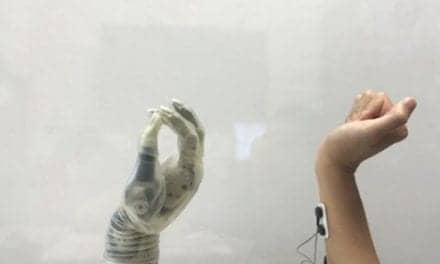
Study first author Trent M. Guess, PhD, found that even small changes in the menisci can hinder their ability to perform critical knee functions.
A new study, called “Predicted Loading on the Menisci During Gait: The Effect of Horn Laxity,” published recently in the Journal of Biomechanics, sheds light on the menisci and their importance in knee-joint health, according to a University of Missouri news release. Per the release, the study suggests that even small changes in the menisci can hinder their ability to perform critical knee functions.
“The menisci are sensitive, and a fine line exists between the menisci doing what they’re supposed to do and the menisci not functioning properly,” says the study’s first author Trent M. Guess, PhD, the HealthSouth associate professor of physical therapy in the MU School of Health Professions and orthopedic surgery in the MU School of Medicine, in the release.
“As the meniscal attachments to the tibia—the calf bone—become more lax, it doesn’t take much for the menisci to lose all their function. This function declines as individuals age and could be one contributing factor to osteoarthritis,” he adds.
According to the release, Guess leads the Mizzou Motion Analysis Center, which houses a gait lab that uses a variety of sensors to evaluate how people walk and move. In the lab, the release notes, participants walk on sensors called force plates that measure the forces exerted between their feet and the floor. Participants attach small, reflective sensors or “markers” to their bodies, and infrared cameras captured the movement, which is sent to a computer for analysis.
Guess and his colleagues studied this data to see which muscles were activated during each movement. Computational models that combined gait measurements with medical images helped them predict how much force was exerted on knee structures—such as cartilage, ligaments, and the menisci—during a particular movement.
“Getting up and out of a chair, an individual can put four times her body weight just across one knee,” Guess says in the release. “Can you imagine a basketball player jumping up and down, the force that he would put across his knees? It is a huge amount of force. If someone doesn’t have functional menisci, basically all those forces are concentrated in a small area, which creates a lot of pressure on the joint and is bad for the cartilage, which over time, could lead to osteoarthritis. The menisci act as a cushion, distributing forces over a larger area while also nourishing and lubricating the knee.”
Guess adds that his research can inform physicians and physical therapists, who may want to reconsider how they treat injuries, such as a torn meniscus. Even 20 years ago, Guess notes in the release, the menisci were not considered important and were removed if they were injured.
“Now, we realize their importance for all aspects of knee function and preventing osteoarthritis. Surgeons might not have bothered to fix meniscal tears in the past, but our research suggests repairing these injuries might be worthwhile because, if left untreated, damage to the menisci could contribute to osteoarthritis in the near future,” he says.
[Source: University of Missouri]





